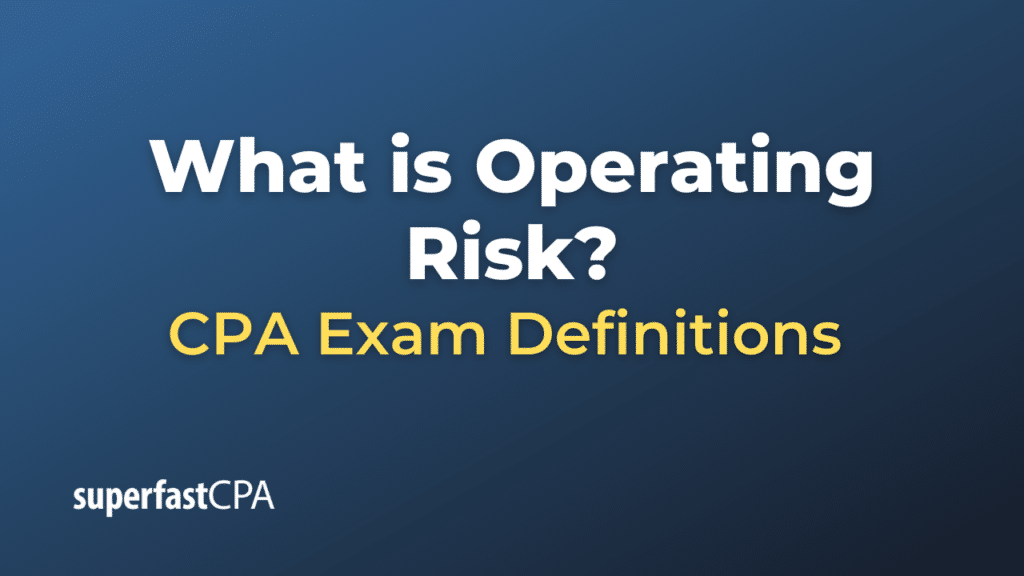Operating Risk
Operating risk, also known as business risk, refers to the uncertainties or potential financial losses that arise out of the day-to-day operations of a business. These risks are inherent to the company’s operational environment and can impact its operational efficiency, financial stability, and overall profitability.
Operating risks can be classified into two main types:
- Internal Risks: These are the risks within the control of the business. Examples include inefficiencies in operations, obsolescence of technology, labor disputes, poor management decisions, or failure to comply with regulatory standards.
- External Risks: These risks are beyond the control of the business. They include changes in market conditions, shifts in consumer demand, new competitors entering the market, changes in government regulations, natural disasters, or other events that can disrupt supply chains.
Managing operating risk is an essential part of a business’s risk management strategy. It involves identifying potential risks, assessing their potential impact, and implementing measures to mitigate their effects. This might include enhancing operational efficiency, diversifying product offerings, investing in updated technology, ensuring regulatory compliance, or establishing strong relationships with suppliers and customers.
It’s important to note that while operating risk can never be completely eliminated, it can be managed and reduced through careful planning and strategic decision-making. Also, different industries and types of businesses will face different types and levels of operating risk, so risk management strategies must be tailored to the specific circumstances of each business.
Example of Operating Risk
Let’s take a hypothetical company called “TechMaster” that manufactures high-tech gadgets.
Internal Operating Risks:
- Inefficiencies in Production: Suppose TechMaster’s manufacturing process is outdated, leading to higher production costs and slower production times. This inefficiency is an internal operating risk as it can decrease the company’s profitability and competitiveness.
- Poor Management Decisions: If the management team at TechMaster decides to launch a new product without adequate market research, and the product ends up failing, it would result in significant financial losses. This poor decision-making is an internal operating risk.
External Operating Risks:
- Market Conditions: Assume that a new company enters the market, offering similar gadgets at a lower price. This increased competition represents an external operating risk for TechMaster as it could lead to a loss of market share and reduced revenues.
- Regulatory Changes: If the government introduces new regulations requiring specific safety features in gadgets that TechMaster’s products currently lack, it would entail an additional cost for TechMaster to comply. This new regulatory requirement is an external operating risk.
Mitigating the Risks:
TechMaster can take various steps to mitigate these operating risks.
For internal risks, it can invest in more efficient production technology and implement a more thorough decision-making process that includes comprehensive market research and risk analysis.
For external risks, it could develop a flexible business model that can quickly adapt to increased competition, such as by improving the quality of its products or offering better customer service. It could also stay abreast of regulatory changes and maintain a contingency fund to deal with unexpected costs.
Remember, operating risks can’t be entirely eliminated, but with the right strategies, they can be effectively managed.













